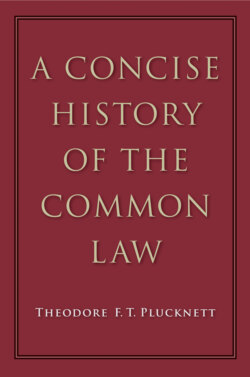Читать книгу A Concise History of the Common Law - Theodore F. T. Plucknett - Страница 34
На сайте Литреса книга снята с продажи.
CHAPTER 4 EDWARD I TO RICHARD II: STATUTES AND SOCIAL REVOLUTION SUMMARY
ОглавлениеWestminster the Second
The Statute and Similar Cases
Bills of Exceptions
The Nisi Prius System
Edward I and Feudalism
Edward II and the Ordinances
Edward III: The Black Death
Richard II: The Peasants’ Revolt
We now come to a period of steady growth in the common law covering just over a century and a quarter (1272-1399). The reign of Edward I is marked by one of the greatest outbursts of reforming legislation in English history until the nineteenth century.1 The first Statute of Westminster (1275) made numerous changes in procedure, many of them designed to protect the subject against the King’s officers, for the evidence collected by the commission of inquiry set up in the previous year had revealed a good deal of oppression.2 The statute may be regarded in some ways as being a sort of supplement to the Great Charter, which was now fifty years old. The Statute of Gloucester (1278) made important amendments to the law of land, especially on the subjects of waste, curtesy and dower. The next year the great Statute of Mortmain did something to check the feudal losses which resulted when land was given to churches, monasteries and corporate bodies, by completely forbidding all amortisation.3 In 1284 we have a remarkable statute re-stating the fundamentals of the common law for the information of sheriffs who were engaged in applying English law to the newly conquered land of Wales. This statute is so long that it almost amounts to a short treatise on the state of the law in 1284; its practical interest to historians is therefore considerable, for it contains information which is difficult to find elsewhere.
